It doesn’t matter whether you have a fish bowl, tank or pond – a net is one of the most important tools any fish keeper can have.
You don’t realize how important it is until you don’t have one.
I use my fish net for the following:
- Fishing out uneaten food (to prevent stinky fish tank)
- Sifting algae
- Skimming debris that floats on the surface
- Scooping up baby brine shrimp and mosquito larva
- Removing plant matter that rests on the substrate
Oh, and of course, removing fish from my tank.
And chances are, you will find a net just as handy for your aquarium.
I have tested and reviewed over 30 different aquarium nets. And today, I am going to show you which ones are the best for your aquarium!
Contents
How do you choose the right net for your aquarium?
There are a few things you need to consider before buying a net for your aquarium…
1. The size of the mesh netting
This is perhaps the most important part of choosing the perfect net for your aquarium.
You see, while many fish nets look similar, the nylon mesh net can vary dramatically.
Below you can see a coarse mesh, with large holes…
Now compare this to a fine mesh, with smaller holes…
Believe it or not, the larger holes actually pose a risk to your fish. There is a risk that your fishes gill plates or fins could become stuck in these holes and become injured as the net moves around when you empty it.
This is typically only a problem for small sized fish or invertebrates that have small body parts capable of slipping between the mesh.
If you plan on keeping this type of fish in your aquarium, a fine aquarium mesh net is best for reducing the likelihood of injury.
In fact, many owners of particularly delicate or expensive fish avoid nets altogether. Instead, they use a plastic bag or container. Sound like you? Don’t worry, I’ll be recommending a safe and effective alternative to aquarium nets later in this guide.
But keeping your fish safe is not the only reason to choose a net with small holes – especially if you are trying to net a tiny critter.
You see, fry and baby brine shrimp are so tiny that they can slip through the holes in your net. Even a fine one!
That’s where a baby brine shrimp net comes in…
This net is so fine that it’s capable of capturing even the smallest of critters in your aquarium. A baby brine shrimp net is the finest net you will find on the shelves of your local fish store.
2. The size of the net
An aquarium net is measured horizontally across the mouth. Sizes range from 2″ to over 10″.
Your first thought might be to grab the largest net possible. After all, the bigger the net, the easier it should be to catch your fish – right?
Unfortunately, this just isn’t true. And you will likely find out that your large aquarium net is a pain in the butt.
Not only is a bigger net difficult to steer around your aquarium, but It’s easy to accidentally bump your expensive plants, corals, damaging them.
On the flip side, a net that is too small won’t fit your fish inside. Worse still, if it’s a squeeze, you risk injuring your fish.
Your fish should be comfortably fit inside your net with room to spare. If any part of your fish sticks out past the opening, or your fish is pressed hard against the edges of the mesh, then your net is too small.
Below is an example of a net that is too small…
If your net is too small, you risk injuring your fish or worse – your fish could leap out of the net while you are moving it.
Larger fish need larger nets and you should choose the correct size – the comfort and safety of your fish depends on it! Check out the difference in room an appropriate net makes…
In order to safely hold your fish, I recommend using a net that is at least 1 inch (2.5 cm) larger than the length of your fish.
So if your fish is 3″ long, you will want to use a net that is 4″ wide or more.
Note: Standard aquarium nets range from 2 inches to ten inches. If you have an over-sized aquarium and need an extra large net, I would suggest using a bait net.
3. Long handle or standard handle?
One last thing to consider is the depth of your tank. If you have a large aquarium, your net probably won’t be long enough to reach the bottom of your aquarium. Not without getting your hands wet, anyway.
Some brands offer nets with a handle almost double the standard size. However, they are much less commonly available. I couldn’t find any at my local fish stores when sourcing nets for this review – I had to order them online.
Want a better way to keep your hands dry and protected while using an aquarium net? I suggest grabbing yourself a good pair of aquarium safe gloves.
What do the different colored nets mean?
You might have noticed aquarium fish nets have mesh that come in all different colors. Green, black, blue and white being the most common.
But do the different colors actually mean anything?
No.
The different colors simply exist so that one brand can differentiate their fish net from another.
The only fish net that claims the color serves a purpose is the Penn Plax Infra Red Quick Net, seen below…
This net is supposed to make fish easier to catch. The theory is that fish cannot see the red colored mesh on this net, so they won’t see it coming when you scoop them up.
Obviously, I had to put this to the test.
Now, the owner of my local fish store was nice enough to let me test these claims on each of his aquariums (and rightly so, I spend most of my meagre pay check there!)
So I tested the nets claims on some common household fish including:
- Goldfish
- Danios
- Platies
- Guppies
- Betta
- A very grumpy pleco
- Clownfish
- Wrass
- Tangs
After letting the fish calm down, I used a standard blue aquarium net that the owner uses to catch fish for customers.
I honestly couldn’t tell the difference. It didn’t matter if I went slow and steady or attempted to strike fast – All fish were just as wary of the “invisible red net” as they were of the blue one.
With that said, you can use the different colored nets to your advantage, especially if you have multiple tanks. You could use a black fish net on your freshwater tank and blue net on your saltwater one, to avoid cross-contamination.
But for everyone else? Choose your favorite color.
Best aquarium fish nets
Looking for the best aquarium net? I have personally tested over 30 different aquarium nets to date. After spending over 15 hours scooping, catching and performing other aquarium net related tasks, I am ready to share my top picks with you.
Best all-round aquarium net – Marina and Tetra
Sizes:
- 3″ (7.6 cm)
- 4″ (10.1 cm)
- 5″ (12.7 cm)
- 6″ (15.2 cm)
- 8″ (20.3 cm)
- 10″ (25.4 cm)
Mesh size: Fine
Out of all the nets I tested, my top pick is the Marina Fish Net. Cheap, commonly available and, most importantly available in a wide range of sizes. There is something for every fish keeper large nets for catching cichlids and small nets for scooping up betta and shrimp.
Why Marina? It had the finest mesh out of any net I tested, making it suitable for even delicate fish. The nylon mesh was soft to touch, preventing injury to the fins and gill plates of smaller fish.
Please be mindful that marina also makes a coarser net that is available in a black or green color. Only the blue colored nets have the soft mesh.
Note: This is the exact same aquarium net as the Tetra Softnet. However, Marina is my top pick on account of the net being available in more sizes. Marina and Tetra are both brands of the same company, Hagen.
Best small aquarium net – Penn-Plax Quick Net
Size
- 2″ (5.1 cm)
Mesh Size: Coarse
Small nets are often referred to as a betta scoop. On account that the small net allows you to easily scoop your betta out of his small bowl, vase or “mini-aquarium.”
To be perfectly clear, I do not recommend betta be kept in anything this small. But there is no denying that a small net has it’s uses.
I personally use a small net to chase the fish I want to catch into the larger one – it’s great for herding those sneaky fish that like to hide amongst your plants and decorations.
At 2 inches wide, the Penn Plax Quick Net is one of the smallest on the market. If you have a need for a small aquarium net, then this is as good as it gets.
The reason the Penn Plax Quick Net won? It’s handle is made from 3 pieces of wire, twisted together. Other aquarium nets this size only had two, and the handle would noticible bend and bounce when scooping fish and objects out of the aquarium.
Best net for baby brine shrimp and fry – Penn Plax
Sizes:
- 3″ (7.6 cm)
- 4″ (10.1 cm)
Mesh size: Super Fine
Baby brine shrimp are so tiny that they can slip through the nylon mesh of a standard aquarium net. While the aquarium nets I have listed so far are the best on the market, they are no match for the small size of baby brine shrimp.
To overcome this problem, the Penn Plax shrimp net is made from a fine nylon mesh. The holes are small enough to drain the water without the baby brine shrimp escaping!
Oh, and it also works great for straining mosquito larva, fry (baby fish) or even small pieces of debris from the water.
Best aquarium net that isn’t actually a net….
While this small square colander was designed with cooking in mind, it works just at home in your aquarium. Prefer to use a container or zip-lock bag to catch your fish? I highly recommend considering this…
Sure, a container might be safer for catching delicate or expensive fish, but draining it while keeping your fish inside is a chore.
This small colander offers the best of both worlds – there is no netting for your fish to get tangled up in and the water drains right out.
The competition
If you look at my top picks, you might notice that despite being from different brands, they all have the same design – A twisted wire handle with mesh sewn into the opening.
Interestingly, every net that differed from this design fell short in way or another.
While the plastic handled KollerCraft Tom Aquarium Net was hard to pass up in terms of price, the handle cracked when I attempted to lift a goldfish out of my aquarium. Similar sized wire nets handled the same job with ease.
I loved the idea behind the Fluval Telescopic Shrimp Net. A net with an extendable handle is a great idea, allowing you to use a single net with different sized aquariums. Unfortunately, execution was poor. Not only did the thin wire on the opening of the net easily bend out of shape, but the steel handle showed signs of rust. Unfortunately, if you are after a small round aquarium net, say for a fish bowl, this is basically your only choice.
Fluvals second attempt at a telescopic net also failed to impress. The Fluval Edge Extendable Fish Net had an awkward triangular opening that made catching fish and scooping up objects more difficult than it should have. Still, I loved the idea of the extendable handle.
If you are looking for a coarse net, Deep Blue’s mesh nets had the largest holes out of all the aquarium nets I tested. However, their smaller sized Deep Blue Professional nets (2 inch and 3 inch) were let down by only using 2 twists of wire instead of 3. The handle noticeably bent when fish were caught.
How to clean and disinfect your aquarium net
Would you eat with a dirty spoon?
Of course you wouldn’t. You would make sure that your spoon is washed and disinfected before you use it again.
Well, many aquarists feel the same about their nets and disinfect it in between uses. This is particularly important if you share nets between multiple tanks or have scooped up a fish suffering from disease or parasites.
I asked my local fish store how they prevented contaminating each tank with their nets. I was pointed to a bucket, filled with what looked like a blue liquid – it is here that the fish nets would soak when not in use.
It turns out that this ‘blue liquid’ was Net Soak. This mixture of benzalkonium chloride and methylene blue ensures that nets were kept disease and bacteria free.
You can grab it yourself here…
Upon further research, I discovered net soak has been used in a study to determine its suitability in sterilizing fish nets used in a laboratory setting. It was found to be effective at both preventing spread of disease and build-up of waste products – you couldn’t ask for a better review.[1]
For the record, my local fish store changes their disinfectant solution weekly.
Another staff member suggested that I could also use a diluted potassium permanganate or hydrogen peroxide solution to achieve the similar results – whatever you have on hand, really.
Conclusion
I would consider a net to be an essential piece of aquarium equipment. There is just so much you can do with it…
From scooping up your fish to grabbing that uneaten food floating on the surface of your tank, it sure beats getting your hands wet.
And with the help of this guide, you can make sure you buy the best net for your aquarium.
What net do you use for your fish tank? Let me know in the comments below!

Ian Sterling, founder of Fishlab.com, began his aquarium journey over 30 years ago, driven by a deep fascination for fish and their diverse personalities. His website, Fishlab.com, is dedicated to making fishkeeping accessible and enjoyable, offering beginner-friendly guidance, expert insights, and a community for aquarists to connect and share experiences.


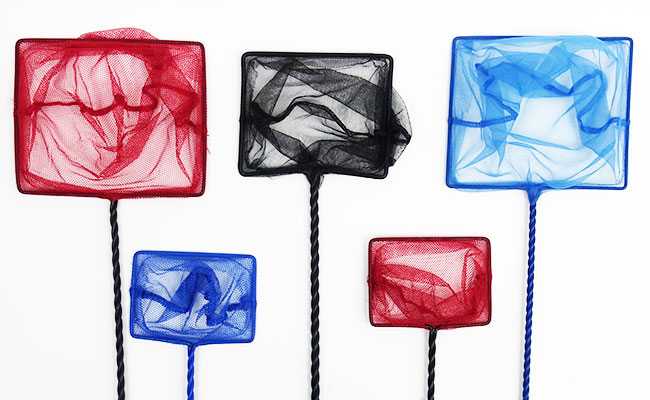
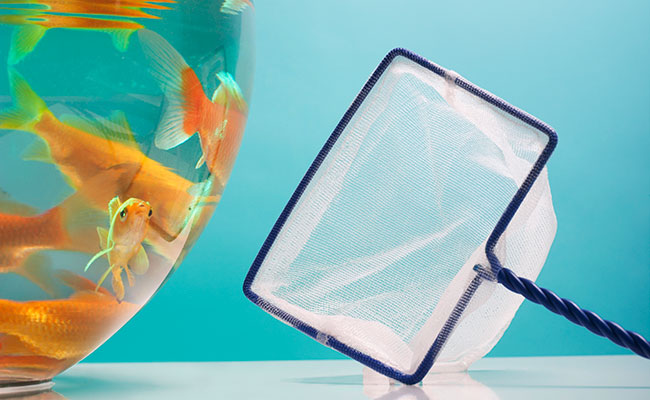
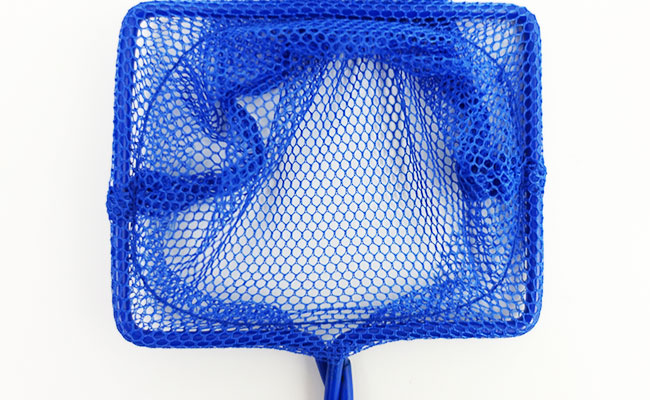
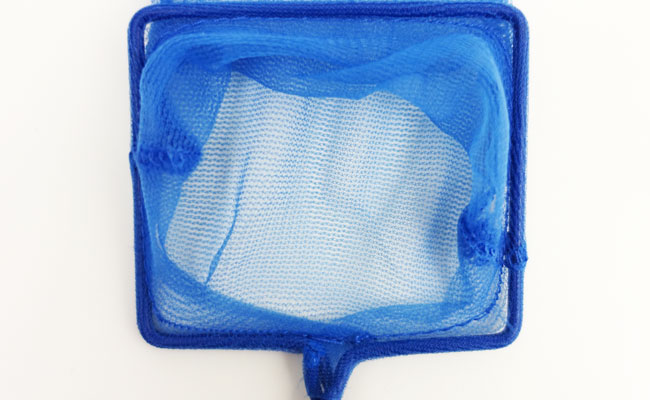
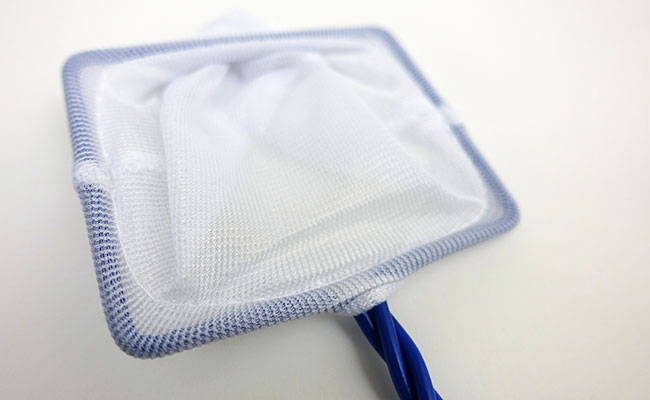
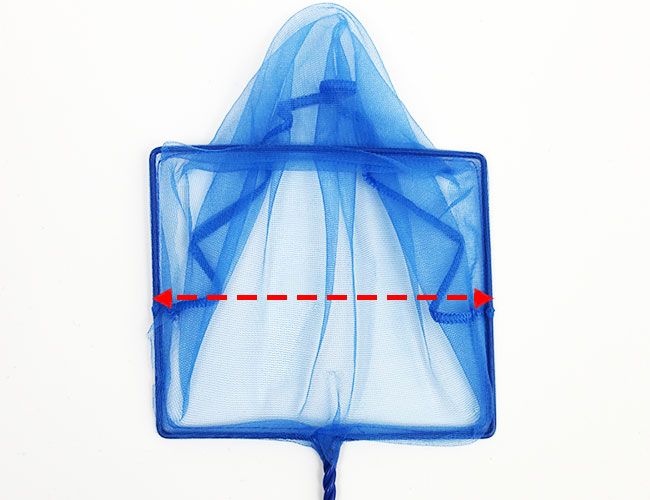
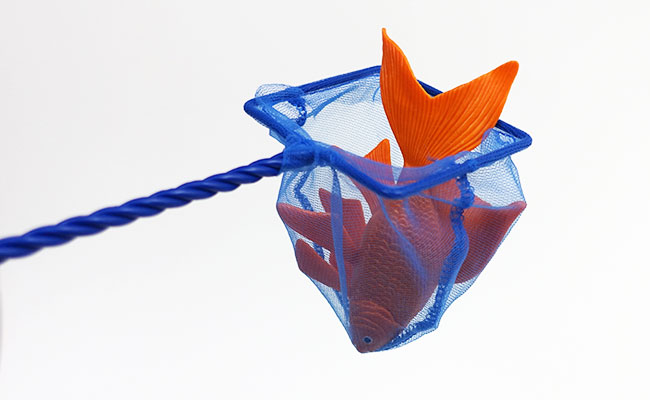
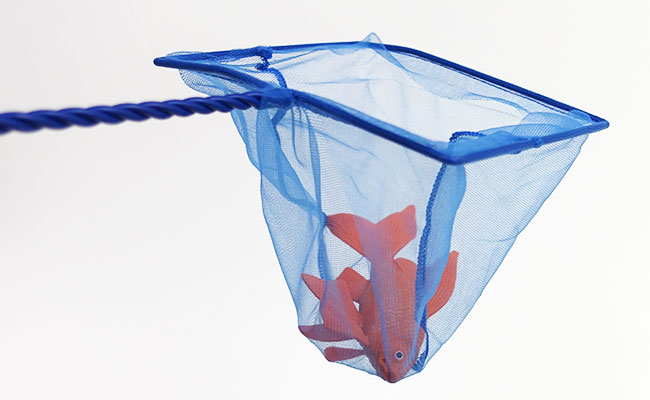
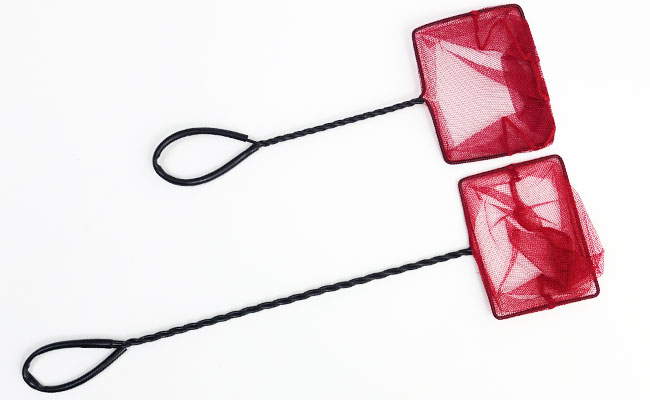
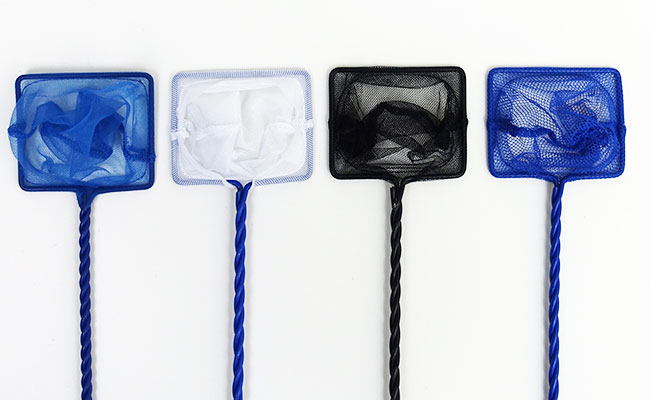


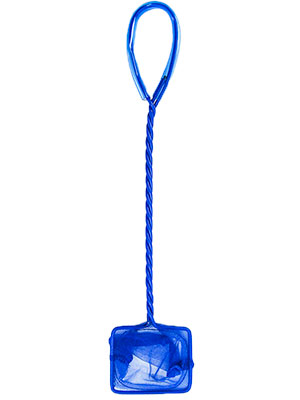

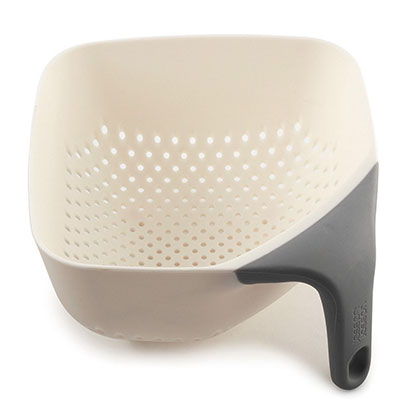

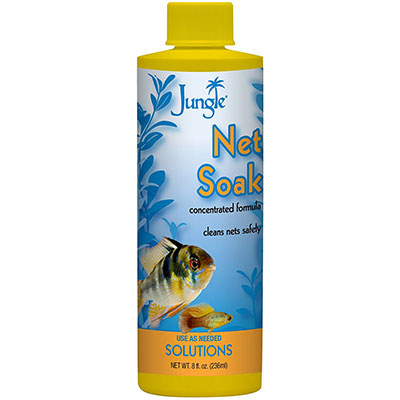
Comments (2)
I use a plastic bowl so I don’t hurt my little bettas fins. I like the idea of using a colander though so water can drain out.
Hi Ted,
A colander is definitely a better solution than a bowl. All that water that you are catching with your betta will drain right out!